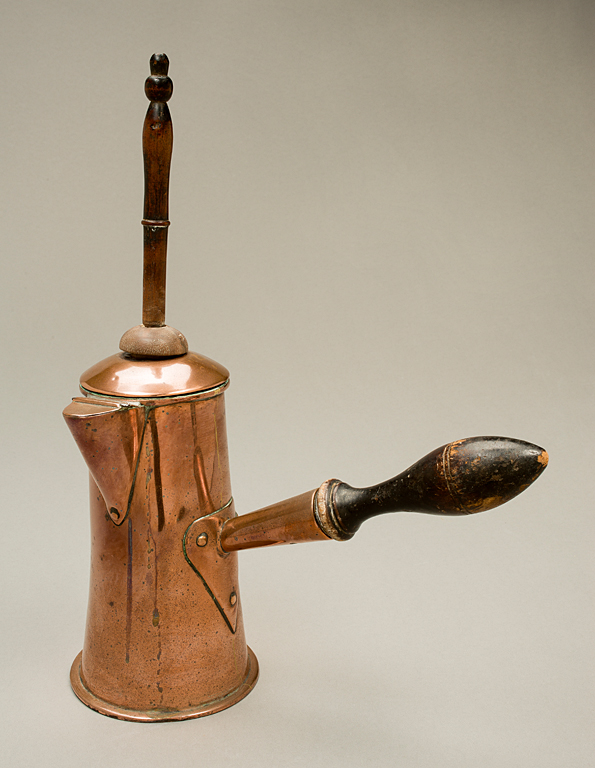Lucy Terry Prince
How Do We Know?
WIREFRAME ONLY - NOT YET DESIGNED
How Do We Know?
Chocolate pot
- Date:
- 1730 - 1770
- Item Type:
- object

About
Unlike today, chocolate was consumed almost exclusively as a hot beverage in the 17th and 18th centuries, both in Europe and in the American colonies. Primarily taken for breakfast, its reputation as a healthful food also made it a meal replacement for elderly or ill people. In 1756, Major Elijah Williams, who kept a store in Deerfield, Massachusetts, purchased 40 lbs. of chocolate at 10 shillings per lb. from a Boston merchant; he also purchased equal amounts of tea at 37 shillings, 6 pence per lb. and coffee at 8 shillings per lb. In 1755, Williams charged Lucy Terry, an African-American woman enslaved by Ebenezer Wells in Deerfield, 6 pence for chocolate she purchased at his store. The preparation of chocolate was a finicky, time-consuming process requiring constant attention. According to an English source, some people "boil [the chocolate] in water and sugar, others mix half water and half milk and boil it, then added powdered chocolate to it and boil them together; others add wine and water." The same source cautioned cooks to "Be sure whilst it is boiling to keep it stirring, and when it is off the fire, whir it with your hand mill [the stick used for stirring the thick chocolate mixture]. That is, it must be mixed in a deep pot of Tin, copper or stone, with a cover with a hole in the middle of it, for the handle of the mill to come out at, or without a cover. This being whirled between your hands, whilst the pot is over the fire, and raises a head of froth over it."